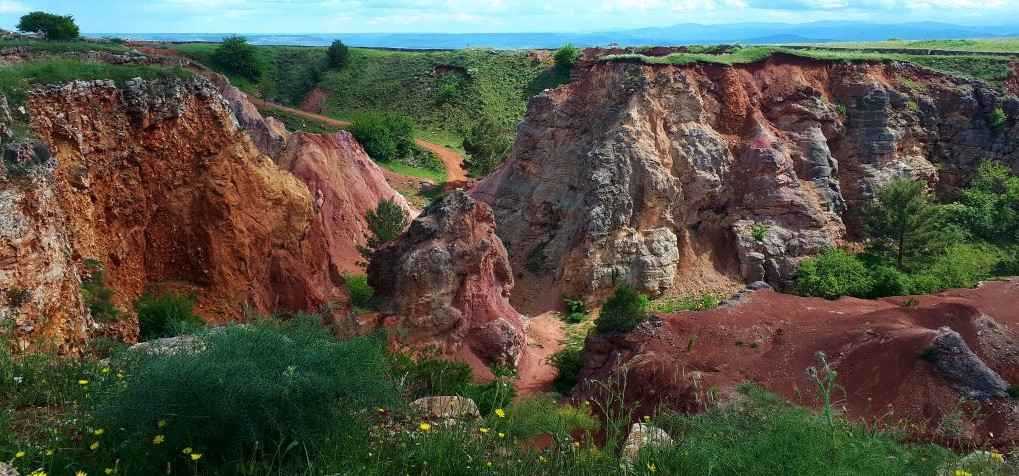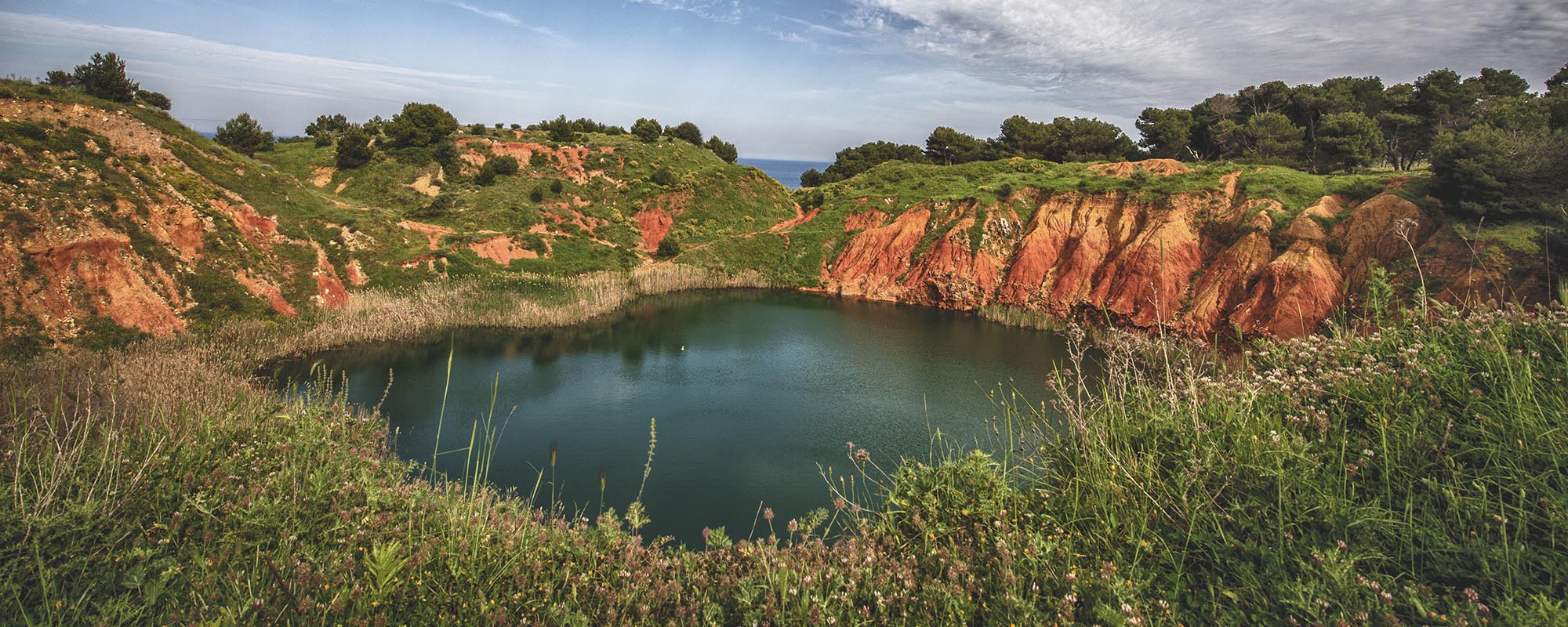



In the countryside of Spinazzola, 10 kilometers from the city, there is a red earth deposit, called "The bauxite quarry". A place rarely visited on a tourist level and perhaps for this reason it has a charm that goes beyond custom. The quarries were active for a long time, before bauxite was replaced by more practical and less expensive materials.
The presence of this mineral was discovered in 1935 by surveyor Luca Nanna and accountant Paolo Cappiello, originally from Altamura on an excursion to the Alta Murgia territories. Nanna and Cappiello collected some samples and sent them to a Genoese laboratory. Having ascertained the presence of bauxite, they decided to set up a company for the research and mining exploitation of the area. The quarry was active from 1950 until 1978 and was one of the most important mineral deposits in the whole Italian peninsula. At the time, the extracted material was transported to the port of Trani to then send it to Porto Marghera, where the aluminum processing plants were located. The extraction of bauxite was later abandoned due to foreign competition
This particular rock is formed thanks to the alteration of limestone rocks, deriving from atmospheric agents and is made up of various mineral species, including oxides and hydroxides, both aluminum and iron, for this reason the material was used industrially to work the alumina from which the aluminum is obtained.
